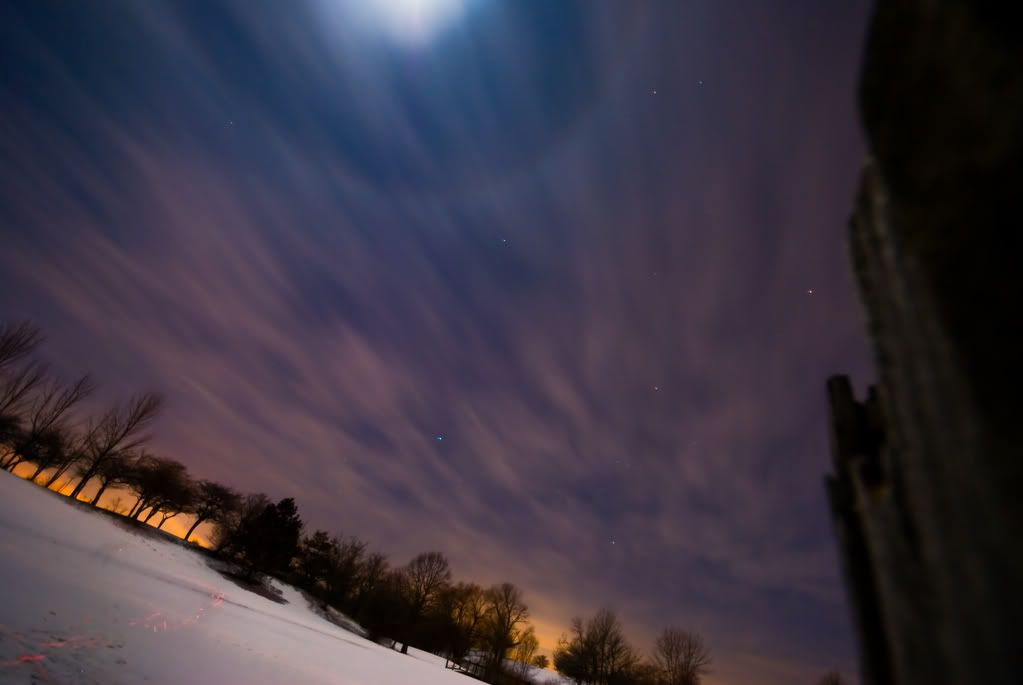Here's a better answer that I google searched for you.
Q: Last night around 11:15 pm, there was a wonderful ring around the moon. It was a hazy sky, not many stars to be seen. Is there a name for this? What causes it? Thanks for any (moon) light you can shed. (Someplace, World)
A: You probably saw a lunar halo or possibly a lunar corona. I can't tell which from what you say, but let's assume you saw a halo, such as that shown in the top photo. Hexagonal ice crystals high in cirrus clouds scatter moonlight to our eyes in such a way that a halo sometimes appears about the moon. Halos come in two sizes: "small" and "large."
Even the "small" halo is huge. Stretch out your fingers at arm's length. Put your thumb on the horizon. Your little finger will then reach almost a quarter of the way to overhead, and that's only a stretch of 20 degrees. The halo is about 22 degrees in radius, so placing your thumb on the moon, puts your little finger about at the inner ring. The halo is always about the same distance (angular size) across, wherever it is in the sky. You could, however, have seen the large (46-degree) halo, but it is much more rare.
You mentioned it was a hazy night, and not many stars shone through the haze. Cirro-stratus or cirrus clouds caused the haze. Such clouds are thin, wispy sheets high in the sky — about three miles (5 km) up, and are made of ice crystals, many shaped like tiny bathroom hex tiles or like small hexagonal pencils.
Thus, you had the two necessary ingredients to produce a halo about the moon:
• moonlight, and
• a thin veil of hexagonal ice crystals between your eye and the moon.
These two agents resulted in a halo, much as sunlight and rain falling between your eye and the sun produce a rainbow.
The 22-degree lunar halo is surprisingly common. If we look hard, and often, we can see at least a part of the halo around the moon or the sun "on an average of perhaps one out of every five days in most climates at any time of year," writes Fred Schaaf in Wonders of the Sky.




